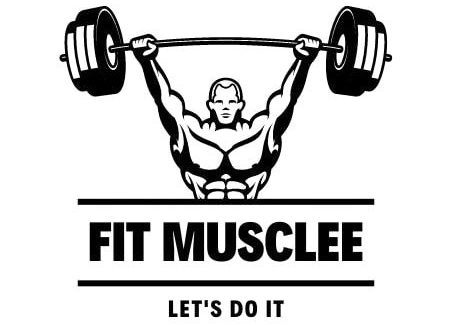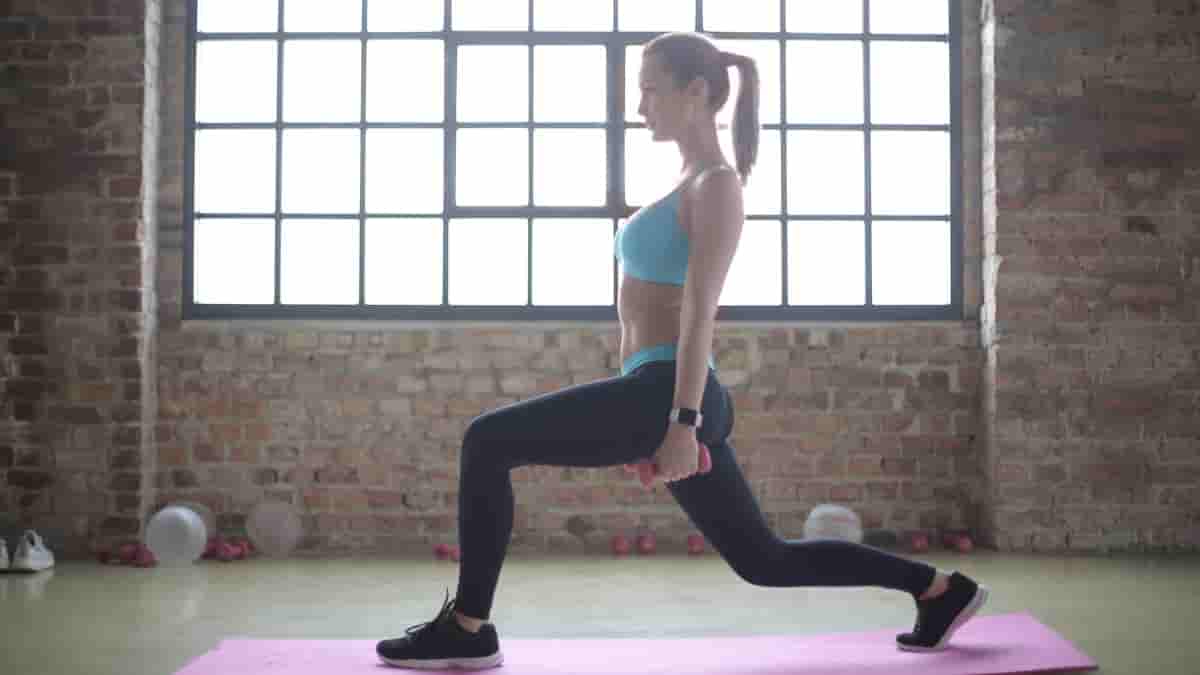Here is your complete guide to the front squat alternative.
Introduction to Front Squat Alternative
The front squat is a staple exercise in strength training, renowned for its ability to target multiple muscle groups, particularly the quadriceps, glutes, and core. However, not everyone can perform front squats comfortably or effectively. Whether due to mobility issues, equipment limitations, or simply a desire for variety in your workout routine, exploring front squat alternative can be beneficial. In this article, we will delve into various alternatives that can provide similar benefits while accommodating different fitness levels and preferences.
What is the Front Squat?
The front squat is a variation of the traditional squat where the barbell is held across the front of the shoulders rather than resting on the back. This position requires greater core stability and promotes an upright torso, making it an excellent choice for improving posture and reducing lower back strain.
Why Consider Front Squat Alternative?
There are several reasons you might seek front squat alternatives:
- Mobility Issues: Some individuals may struggle with wrist or shoulder mobility, making it difficult to hold the barbell in the front rack position.
- Equipment Availability: Not everyone has access to a barbell or squat rack at home or in their gym.
- Variety: Incorporating different exercises can prevent workout monotony and stimulate muscle growth through varied movement patterns.
Introducing Front Squat Alternative
In this guide, we will explore various front squat alternatives, detailing their benefits and how to perform them correctly. Each alternative offers unique advantages, ensuring that you can maintain a robust lower body workout regardless of your circumstances.
Understanding the Mechanics of Front Squat Alternative
Muscle Groups Targeted
The front squat primarily engages several key muscle groups:
- Quadriceps: The main muscle group targeted during the squat.
- Glutes: Essential for hip extension and stabilization.
- Hamstrings: Assist in controlling movement and maintaining balance.
- Core: Critical for stability and maintaining proper posture throughout the lift.
Benefits of Front Squats
The front squat offers numerous benefits, including:
- Improved Posture: Encourages an upright torso position.
- Reduced Lower Back Strain: Shifts the load forward, minimizing stress on the lumbar spine.
- Enhanced Core Engagement: Requires significant core stability to maintain balance.
Limitations of Front Squats
Despite their advantages, front squats may not be suitable for everyone due to:
- Wrist Discomfort: Holding a barbell in the front rack position can cause discomfort for some individuals.
- Shoulder Mobility Challenges: Limited shoulder flexibility can hinder proper form.
Top Front Squat Alternative
Here are some effective front squat alternatives that can help you achieve similar results:
1. Dumbbell Front Squats: Front Squat Alternative
Dumbbell front squats are an excellent alternative that allows for greater range of motion and less strain on the wrists.
How to Perform Dumbbell Front Squats:
- Stand with feet shoulder-width apart while holding a dumbbell in each hand at shoulder height.
- Engage your core and keep your elbows high.
- Lower your body into a squat while keeping your chest up and back straight.
- Push through your heels to return to standing.
Benefits of Front Squat Alternative:
- Greater control over weight distribution.
- Reduced wrist strain compared to barbell front squats.
2. Goblet Squats: Front Squat Alternative
The goblet squat is another great alternative that utilizes a single dumbbell or kettlebell.
How to Perform Goblet Squats:
- Hold a kettlebell or dumbbell close to your chest with both hands.
- Stand with feet slightly wider than shoulder-width apart.
- Lower into a squat while keeping the weight close to your body.
- Drive through your heels to return to standing.
Benefits:
- Excellent for beginners due to its simplicity.
- Enhances core stability and mobility.
3. Bulgarian Split Squats: Front Squat Alternative
Bulgarian split squats focus on one leg at a time, providing a unique challenge and helping to address muscle imbalances.
How to Perform Bulgarian Split Squats:
- Stand about two feet in front of a bench or elevated surface.
- Place one foot on the bench behind you.
- Lower your body into a lunge position with your front knee over your ankle.
- Push through your front heel to return to standing.
Benefits:
- Improves balance and coordination.
- Targets quads and glutes effectively.
4. Zercher Squats
Zercher squats involve holding the barbell in the crook of your elbows, providing an alternative grip that reduces strain on the wrists.
How to Perform Zercher Squats:
- Stand with feet shoulder-width apart while holding a barbell in the crook of your elbows.
- Engage your core and keep your elbows close to your body.
- Lower into a squat while maintaining an upright torso.
- Push through your heels to return to standing.
Benefits:
- Engages core muscles significantly.
- Reduces lower back strain compared to traditional squats.
5. Kettlebell Front Squats
Kettlebell front squats are similar to dumbbell front squats but offer different loading mechanics due to the shape of the kettlebell.
How to Perform Kettlebell Front Squats:
- Hold a kettlebell by its horns at chest height with both hands.
- Stand with feet shoulder-width apart.
- Lower into a squat while keeping the kettlebell close to your chest.
- Drive through your heels to return to standing.
Benefits:
- Improves grip strength alongside lower body strength.
- Encourages proper squat mechanics due to weight positioning.
6. Smith Machine Front Squats
Using a Smith machine can help stabilize the movement while allowing you to focus on form without worrying about balancing free weights.
How to Perform Smith Machine Front Squats:
- Set up the Smith machine bar at shoulder height.
- Position yourself under the bar with it resting on your shoulders.
- Unrack the bar and lower into a squat while keeping your back straight.
- Push through your heels to return to standing.
Benefits:
- Provides stability for beginners or those recovering from injury.
- Allows for heavier lifting without needing a spotter.
7. Hack Squats
Hack squats target similar muscle groups as front squats but emphasize different movement mechanics.
How to Perform Hack Squats:
- Stand on a hack squat machine with shoulders against pads and feet shoulder-width apart.
- Lower into a squat by bending at the knees while keeping back against pads.
- Push through heels to return to starting position.
Benefits:
- Isolates quads effectively due to machine design.
- Reduces strain on lower back compared to free-weight squatting.
8. Pendulum Squats
Pendulum squats are performed using specialized equipment that mimics natural movement patterns while providing support.
How to Perform Pendulum Squats:
- Position yourself in a pendulum squat machine with feet shoulder-width apart.
- Lower into a squat as the machine guides your movement path.
- Push through heels as you return upward.
Benefits:
- Provides excellent support for those with mobility issues.
- Allows for heavy loading without compromising form.
9. Safety Bar Squats
Safety bar squats utilize a specialized bar that allows for better grip and positioning without straining wrists or shoulders.
How to Perform Safety Bar Squats:
- Position yourself under a safety bar with it resting on your upper traps.
- Unrack the bar and stand tall with feet shoulder-width apart.
- Lower into a squat while keeping elbows tucked in close.
- Drive through heels as you return upward.
Benefits:
- Reduces wrist strain compared to traditional back squatting techniques.
- Promotes an upright torso position similar to front squatting mechanics.
Comparison Table of Front Squat Alternative
| Exercise | Equipment Needed | Primary Muscles Targeted | Difficulty Level |
|---|---|---|---|
| Dumbbell Front Squat | Dumbbells | Quads, Glutes | Beginner |
| Goblet Squat | Kettlebell/Dumbbell | Quads, Core | Beginner |
| Bulgarian Split Squat | Dumbbells | Quads, Glutes | Intermediate |
| Zercher Squat | Barbell | Quads, Core | Intermediate |
| Kettlebell Front Squat | Kettlebell | Quads, Glutes | Intermediate |
| Smith Machine Front Squat | Smith Machine | Quads, Glutes | Beginner |
| Hack Squat | Hack Squat Machine | Quads | Beginner |
| Pendulum Squat | Pendulum Machine | Quads | Intermediate |
| Safety Bar Squat | Safety Bar | Quads, Glutes | Intermediate |
FAQs about Front Squat Alternative
What are some effective front squat alternatives?
Some effective alternatives include dumbbell front squats, goblet squats, Bulgarian split squats, Zercher squats, kettlebell front squats, Smith machine front squats, hack squats, pendulum squats, and safety bar squats.
Read Also: HIIT and Circuit Training.
Can I build muscle with front squat alternatives?
Absolutely! Many front squat alternatives target similar muscle groups and can be just as effective for building strength and muscle mass when performed correctly and consistently.
Read Also: Hamstrings Sore After Deadlifts.
How do I choose the right front squat alternative for my goals?
Consider factors such as available equipment, personal comfort level with each exercise, specific muscle groups you wish to target, and any existing injuries or mobility limitations when selecting an alternative exercise.
Read Also: Floor Press vs Bench.
Are front squat alternatives safe for beginners?
Yes! Many front squat alternatives are beginner-friendly and can be modified based on individual fitness levels and abilities. It’s essential always to prioritize proper form over heavier weights when starting out.
Read Also: Keto vs Paleo vs Carnivore.
Conclusion
Incorporating front squat alternatives into your workout routine can provide numerous benefits while accommodating individual needs and preferences. By exploring these various exercises—such as dumbbell front squats, goblet squats, Bulgarian split squats, Zercher squats, kettlebell front squats, Smith machine variations, hack squats, pendulum squats, and safety bar squats—you can continue building lower body strength effectively without being limited by equipment or mobility challenges.
Read Also: CrossFit Nutrition Supplements.
Remember that variety is key in any fitness program; experimenting with different exercises will not only keep workouts interesting but also promote overall muscle development and prevent plateaus in progress! So grab some weights or find suitable equipment at your gym today—your legs will thank you!
Read Also: Power Clean vs Squat Clean.
References and Resources Used in This Article:
- 3 Front Squat Alternatives for Shredded Quads & Sculpted Abs
- 7 Front Squat Alternatives for Quad Mass & Strength – Legion Athletics
- 9 Front Squat Alternatives You Should Try Now – Strong Home Gym
- 10 Best Front Squat Alternatives For Home And Gym
- 12 Best Front Squat Alternatives | Building Lower Body Strength
- Zercher Squat: Field Alternative for Front Squat

